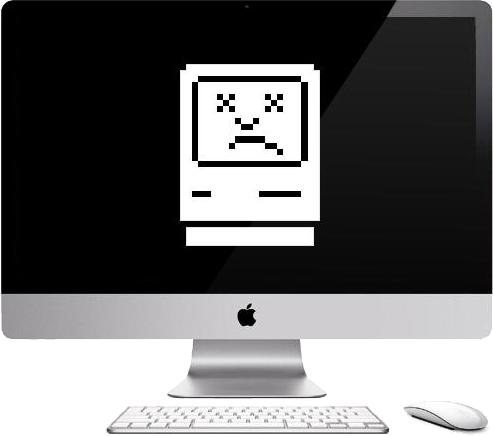
Over the past 4 weeks, the iHelp IT office has been inundated with a number of iMacs, MacBook Pros, and PCs with hardware problems.
In the words of the late, great, Tyler Durden, “on a long-enough timeline the survival rate for everyone drops to zero”*.
Computers are no different. Parts wear out and die the death.
What struck us, though, was the number of computers with hardware issues in a relatively short period of time. We thought maybe there was a curse, maybe solar flare activity, maybe even aliens!
But, when we looked closer, it turned out to be the ubiquitous frenemy to us all: time.
Out of the 8 machines which have had hardware problems in the last 4 weeks (yes – that’s 2 a week), the youngest was 4.5 years old. The rest were all over 5 years old, and that’s significant.
Why 5?
Big things tend to have longer lifespans than smaller things, so the size of a thing might be a fairly reliable indicator of how long it should last; it’s useful life. There’s even a theory on this – called the Rate-of-Living Theory.
That’s all well and good for the living, but can this theory be extended to the non-living, and specifically electronics?
To find out, we charted the lifespan versus the size of a smattering of common electronics, below.

The size and lifespan of common electronics. The bigger the thing, the longer it lasts.
As you can see, as a general rule of thumb, the theory seems to hold. Both lifespan and size are trending in the same direction (though not at the same rate!). Big things last longer, but it’s not linear.
Recently, I wrote a blog post on the new iPhone X, in which I specifically advised iPhone 6 and 6 Plus owners that it’s time to upgrade. This, and telco phone plans generally, would seem to give smart phones a useful life of 2-3 years before parts start to fail, the new operating system runs too slow, and new apps don’t work.
Applying this to computers, and recent events, we have a new golden rule: the rule of 5 years.
And this fits nicely with our size v lifespan chart, above.
Tipping Point
One of the 8 machines which recently failed had the simplest (and most common) of failures; a hard disk failure. This machine was from 2011, and it’s value on Gumtree was around $450. To replace a hard disk the cost is typically $110 for the hard disk, and an average of 3 hours of labour (replace the hard disk, install macOS, migrate the data from a backup), or $594.
Total cost $704, which is a lot higher than the resale value of the Mac.
Is a repair worthwhile? No (unless you get the Mac for free!)
At some earlier point in the now 7-year-old iMac’s life it was the same cost to fix it as you’d get to sell it.
This point in time is the Tipping Point**. Insurance companies know it. Tyler Durden knew it***.
A 21.5 inch iMac around 5 years old will go for anything from $700 – $900 on Gumtree, whereas leaving the decision to sell for another 2 years means that instead of getting an average of $800 for it on Gumtree, the owner is now up for a $700 repair bill.
The tipping point has passed and it’s not worth repairing. You could say it’s time for the tip.
As an added sting, 2 years ago $800 would have covered 1/3 the cost of a new iMac. The now-broken iMac covers none of that cost.
Act Now
Now is the time to check if your Mac is over 5 years old, or even approaching that age.
A working 21.5 inch iMac from 2013 will run the latest macOS and is readily sold. The money you get for it can go towards a replacement. You don’t have to sell it – you might have kids, a niece, or just a local school that could do with a working computer for a classroom.
It’s your choice.
If you’re not sure how old your Mac is and want guidance on what to do, then call iHelp IT – we’ll help you to replace and not die.
* Tyler didn’t say this, but the protagonist has no name.
** I just made this name up; but it’s pretty good.
*** I’m assuming that Tyler was at least aware of the rule.

